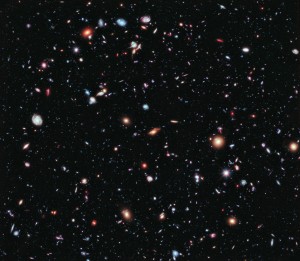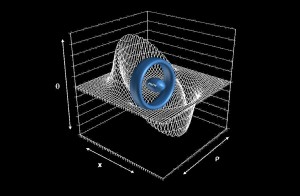Researchers in China have managed to measure the speed of gravity, cool! They found that it travels at roughly the speed of light (.93 to 1.05X, specifically, with a relative error of 5%). This doesn’t really uproot any scientific doctrine, but anytime we can scientifically prove things like this it helps the whole field advance. Read more here.
NASA finds plastic on Mars ( UPDATE:hoax)
 NASA has just issued a press release where they state that the Curiosity rover has found PLASTIC on Mars! It’s in the form of small, eighth inch diameter plastic spheres, of a type of plastic that, as far as we know at least, can only be formed using petrochemicals. This suggests there could possibly be a source of oil on Mars…and the oil that would produce this sort of plastic is only known to come from ancient fossilized organic materials like zooplankton and algae. So this raises all sorts of questions…where did the oil come from…does that mean there was once life on Mars…and how was it turned into plastic? It’s amazing what we’re learning from one solitary robot cruising the surface of Mars with limited scientific capability…there’s so much more to learn from that planet!
NASA has just issued a press release where they state that the Curiosity rover has found PLASTIC on Mars! It’s in the form of small, eighth inch diameter plastic spheres, of a type of plastic that, as far as we know at least, can only be formed using petrochemicals. This suggests there could possibly be a source of oil on Mars…and the oil that would produce this sort of plastic is only known to come from ancient fossilized organic materials like zooplankton and algae. So this raises all sorts of questions…where did the oil come from…does that mean there was once life on Mars…and how was it turned into plastic? It’s amazing what we’re learning from one solitary robot cruising the surface of Mars with limited scientific capability…there’s so much more to learn from that planet!
UPDATE: well that’s embarrassing…it looks like I fell for a hoax, this story is not true.
A quick video primer on Dark Energy
If you’re curious about dark energy, check out this short video giving a high-level overview of what dark energy is (well, at least what we know about it, that is…we don’t really KNOW what it is), and how scientists are working to learn more about it. There’s also a great FAQ on the subject at Discover Magazine’s website…it’s really long, but then, dark energy is a complicated subject!
Hubble’s Latest Masterpiece
 Hubble stunned us in 2009 with its incredible Deep Field Image. In a 48-hour exposure image covering about 1/15th the width of the moon, the Hubble Space Telescope captured thousands of galaxies. To put the scale in perspective, if the entire sky were photographed at this image size, it would result in approximately 30 million pictures. That’s a lot of galaxies!
Hubble stunned us in 2009 with its incredible Deep Field Image. In a 48-hour exposure image covering about 1/15th the width of the moon, the Hubble Space Telescope captured thousands of galaxies. To put the scale in perspective, if the entire sky were photographed at this image size, it would result in approximately 30 million pictures. That’s a lot of galaxies!
Anyway, in the time since the original picture, the telescope has been pointed at the same area of the sky again and again and the images combined, for a total image exposure time of around 23 days (two million seconds)! There are around 5500 galaxies visible in this image; you can view the full image by clicking on the thumbnail above.
Read more in Discover Magazine.
Warp Drive – Plausible?
 We already knew that warp drive (faster than light travel) was theoretically possible, but the energy required to attain these speeds was greater than that contained in the mass of Jupiter (if you converted all of that mass into energy somehow). Well, good news! By making the ‘ring’ around the spacecraft more like a rounded donut than a flat ring, the energy requirements become much more plausible, more along the lines of the mass of the Voyager 1 space probe (still a lot of energy, but at least closer to reality now). Further improvements are possible with this approach too, and with theoretical speeds approach ten times the speed of light, it’s a pretty cool development for space travel (but admittedly a long ways off from a prototype!). This type of engine is known as an Alcubierre Drive, and you can read more about the details at Wikipedia.
We already knew that warp drive (faster than light travel) was theoretically possible, but the energy required to attain these speeds was greater than that contained in the mass of Jupiter (if you converted all of that mass into energy somehow). Well, good news! By making the ‘ring’ around the spacecraft more like a rounded donut than a flat ring, the energy requirements become much more plausible, more along the lines of the mass of the Voyager 1 space probe (still a lot of energy, but at least closer to reality now). Further improvements are possible with this approach too, and with theoretical speeds approach ten times the speed of light, it’s a pretty cool development for space travel (but admittedly a long ways off from a prototype!). This type of engine is known as an Alcubierre Drive, and you can read more about the details at Wikipedia.
So how is this possible when nothing can travel faster than the speed of light? Well, the spacecraft doesn’t actually travel faster than light, but warps space-time around it so that this disturbance in space-time is propagated at more than the speed of light, taking the spacecraft along with it for the ride. Fantastic stuff.
(via Space.com)


